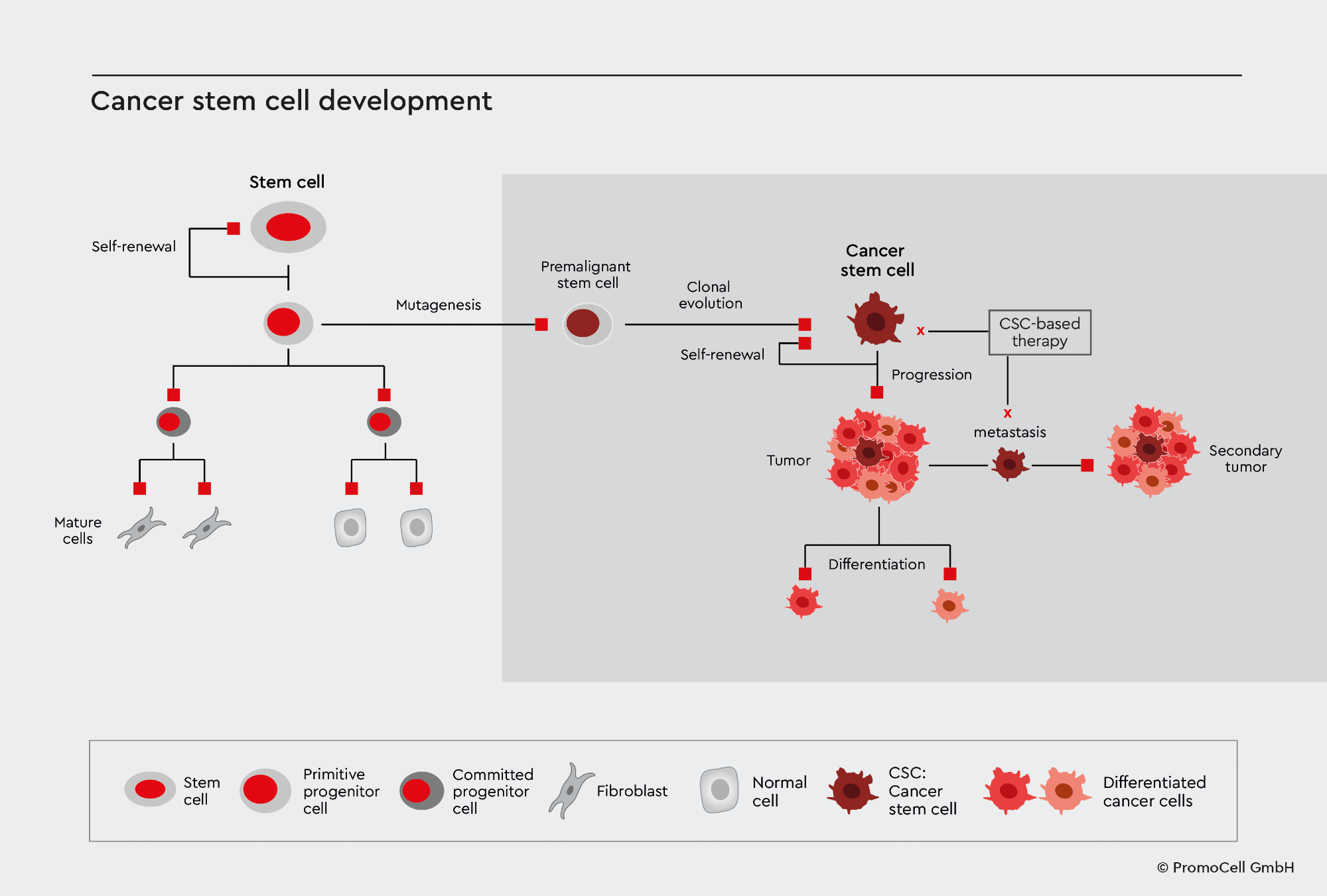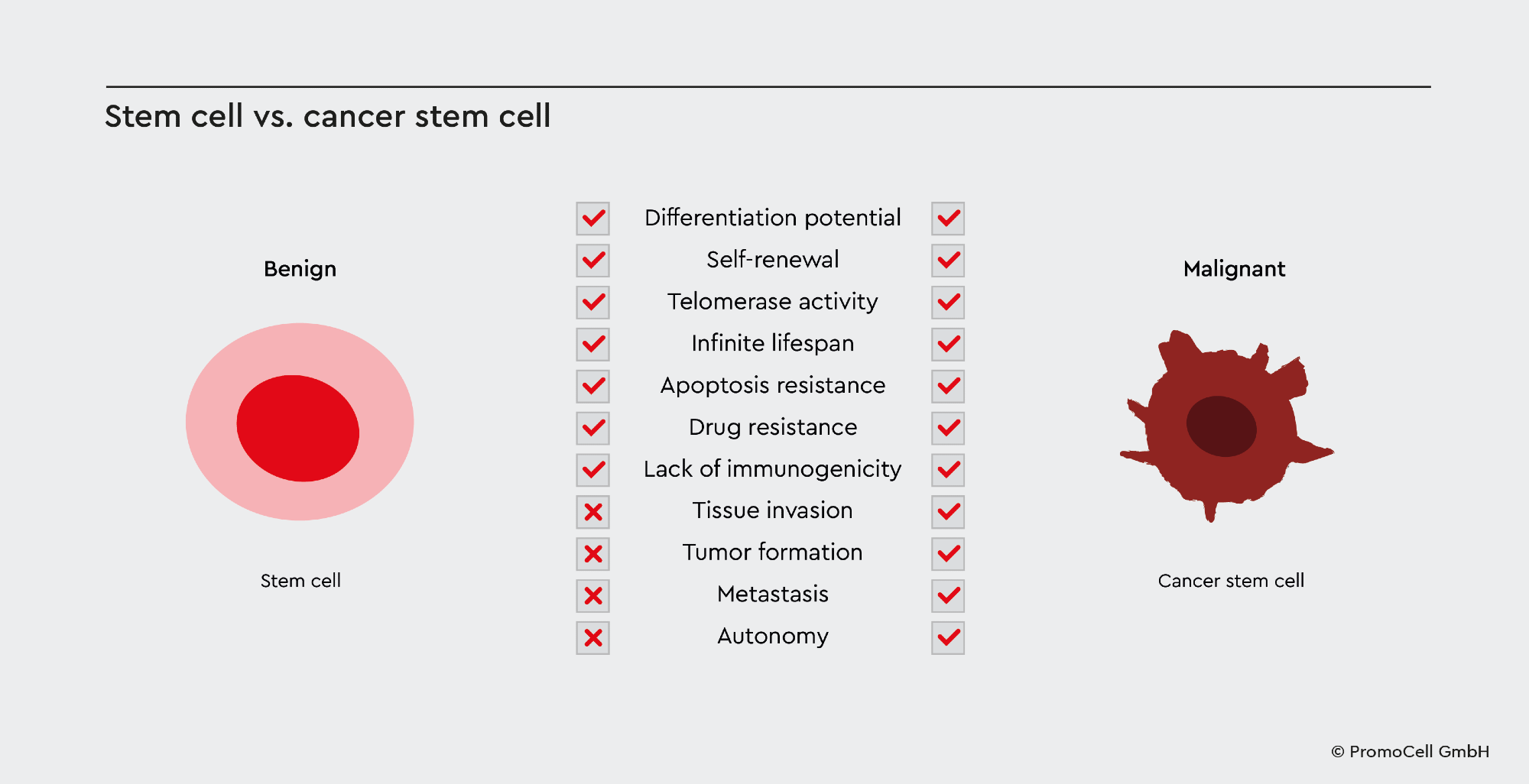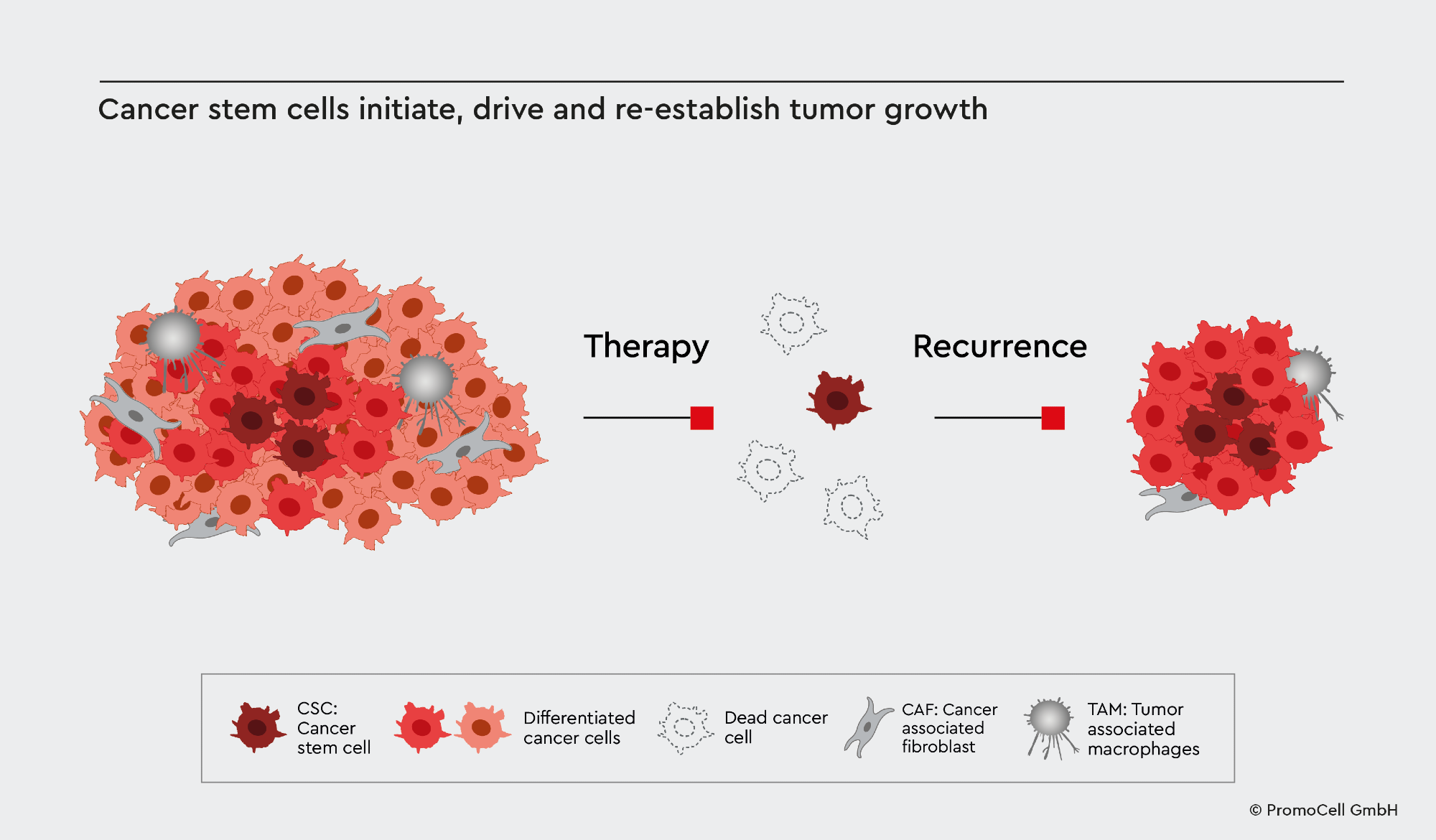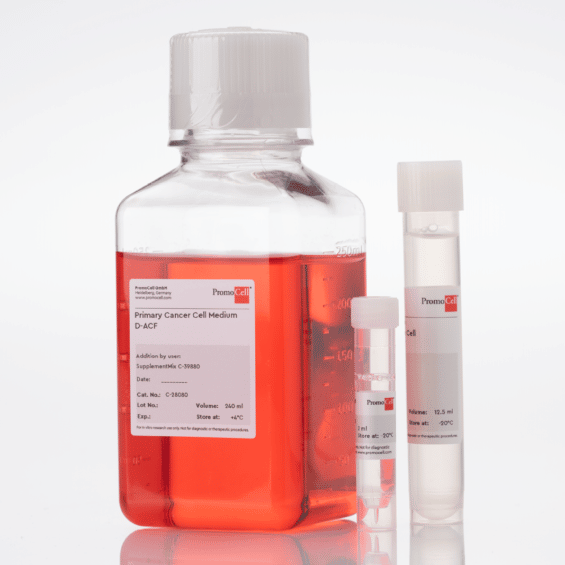Sponsored Content by PromoCellReviewed by Alex SmithDec 7 2022
Understanding cancer stem cells is vital for treating cancer and developing new cancer therapies. Cancer stem cells (CSCs) are a particular type of tumor cell that can significantly influence the development and growth of the debilitating disease.
As indicated by their name, cancer stem cells have the capability to differentiate and self-renew, with the potential to initiate, propagate, and spread cancer in patients resulting in relapses after treatment.1
Therapeutics need to be able to target and fight CSCs to treat cancer effectively. In addition to covering the fundamental biology that underpins CSCs, this article will offer a brief overview of how innovative resources and services for the lab can assist when it comes to targeting cancer stem cells in biomedical research and cancer therapeutics.
How do cancer stem cells develop?
Stem cells have the capacity to readily differentiate into various types of mature tissues, such as muscles, bones, and organs – which are fundamental to the body’s normal development patterns.2
Stem cells continuously go through rounds of replication and maturation. While Stem cells have unique properties that help them to avert mutations, they can sometimes still materialize with catastrophic consequences, and cancer is the likely result.2
CSCs are caused by mutations in the genomes of normal functioning stem cells. These cells are, thus, the site of the tumor origin and generally make up an extremely small amount of the total tumor mass (around 0.01-2%) that can be really tricky to target using therapeutics.2
Many of today’s cancer treatments concentrate their efforts on the mass of the tumor as a whole and do not directly target these problematic cells.

Figure 1. Cancer stem cell development. Schematic overview of the origin, evolution and fate of cancer stem cells. Image Credit: PromoCell
The role of cancer stem cells in tumor biology
Tumor initiation is activated by CSCs during tissue regeneration or in response to exposure to external carcinogens, including toxins and/or radiation that provokes malignant mutations.1
In cancer, uncontrollable growth in cells may be caused by various mutations, including the overexpression of oncogenes and inactivation of tumor suppressors, both of which have devastating consequences on normal cell growth and development.1 This unrestrained propagation of cells results in a tumor.
Specific properties of CSCs – compared to proliferative cancer cells – cause them to experience unstable genetic changes. This means that tumors forming CSCs may become increasingly aggressive, invasive, and resistant to treatments over a period of time, eventually becoming metastatic and spreading to other tissues and areas in the body.1
 Figure 2. Stem cell vs. cancer stem cell. Despite their malignant phenotype, CSCs share common hallmarks of normal stem cells. Image Credit: PromoCell
Figure 2. Stem cell vs. cancer stem cell. Despite their malignant phenotype, CSCs share common hallmarks of normal stem cells. Image Credit: PromoCell
Due to the role CSCs play in tumor initiation and disease recurrence, many researchers are concentrating their efforts on characterizing biomarkers for the cells so that treatment can be greatly improved.
While it is crucial to target the tumor mass itself, any CSCs that remain have the potential to develop metastases, and the cancer will continue to spread. Thus, it is increasingly vital to find a way to use and target cancer stem cells to enhance and innovate personalized biomedical solutions and combat the devastating disease.

Figure 3. Cancer stem cells initiate, drive and re-establish tumor growth. The resistance of CSCs to conventional treatment leads to cancer recurrence in the majority of tumor patients after conventional therapy. Image Credit: PromoCell
Current approaches to target cancer stem cells
Numerous approaches to CSC targeting are in development, but they remain restricted. For instance, causing a disruption in the signaling pathways associated with these specific cells could be useful; however, CSCs and regular stem cells share several of the same pathways, making this a non-specific treatment option.3
Targeting particular surface markers on these cells is another way to potentially treat cancer. However, distinguishing specific biomarkers not expressed on normal stem cells is a complicated task and diminishes the accuracy and efficacy of the treatment.3
Treatment using drugs also comes with risks due to the different genetic and epigenetic landscapes of each individual patient, which may result in extremely variable responses to the drug and even severe side effects.4 Additionally, using animal models is time-intensive, expensive, and less clinically translatable to human systems.4
The first concern to drive the successful development of CSC therapies is the ability to support the “stemness” of cancer stem cells outside of their in vivo physiological niche, which is fundamental to developing suitable cell culture models that are required for research.
Conventional cell media typically employed in tumor studies also support benign tumor cell growth and typically exhibit a loss in malignant cells required for further investigation.4 Moreover, traditional approaches such as fluorescence-activated cell sorting (FACS) and magnetic-activated cell sorting (MACS) make it complex and laborious to isolate and culture cancer stem cells in vitro.
As CSCs are extremely diverse and there is a deficit of distinct and specific markers, the identification, isolation, and culture of cells present a major challenge to scientists and researchers.5
Innovating solutions for working with cancer stem cells
As previously mentioned, it can be a complicated task when trying to isolate and culture CSCs in vitro with conventional approaches. Thus, working with CSCs requires pioneering and specific solutions to combat laboratory workflow challenges.
PromoCell is a leader when it comes to the development of solutions for biomedical science. With a team of scientific experts, PromoCell provides researchers with resources to find the answers and initiate potentially pioneering treatments for pressing biological health challenges like cancer.
PromoCell’s Primary Cancer Culture System can be applied for the isolation and culture of CSCs from tumor biopsies as well as to determine cancer cell lines.6

Image Credit: PromoCell
The Primary Cancer Culture System (PCCS) is a reliable and effective component in a toolbox of media, which is made up of the PCCS, the 3D Tumorsphere Medium XF, and the Cancer Cell Line Medium XF, that selects CSCs and preserves them in culture for further investigation, particularly when supporting the growth of CSCs.
This selectivity maintains diverse cancerous cell populations while also eliminating the need for additional cell sorting steps in the laboratory workflow.4
The toolbox is comprised of various functional media that are able to select CSCs from any starting material while establishing a primary cancer cell line and maintaining a defined and healthy CSC subpopulation in any kind of experimental assembly, including 3D tumorspheres, co-cultivation with other non-tumor cells, screening-assays, and long-term studies.
For instance, tumorspheres offer good insight into tumor biology by acting as a biologically relevant model that is more reflective of the tumor and the dynamics of its microenvironment.5
Tumorspheres require CSCs, which drive tumor formation in culture just as they do in vivo, to be properly maintained outside of their physiological niche as well as be appropriately formed for a specified amount of time to certify that they can be sufficiently studied – all of these characteristics are enabled by the PromoCell cancer media toolbox.5
Contact the experts
Thanks to the recent progress in technology and a greater understanding of the important role CSCs play, groundbreaking life science solutions such as PromoCell’s cancer media toolbox can be developed to scale the hurdles in targeting the cells.
Contact PromoCell today to learn more about how to upgrade a workflow to isolate and maintain CSCs in culture.
If you’re curious to see the different applications for PromoCell’s cancer media toolbox, discover their latest research area!
References
- Walcher, L., et al. (2020). Cancer Stem Cells—Origins and Biomarkers: Perspectives for Targeted Personalized Therapies. Frontiers in Immunology, 11.
- Stem cells and cancer. (2022). Harvard.edu.
- Sun, H.-R., et al. (2019). Therapeutic Strategies Targeting Cancer Stem Cells and Their Microenvironment. Frontiers in Oncology, 9.
- Hof, C. (2017, December 11). Primary Cancer Cells: A Culture System Opens the Door to Individualized Therapy. PromoCell.
- Hof, C. (2018, April 17). A Home for Cancer Stem Cells: 3D Tumorspheres. PromoCell.
- Primary Cancer Culture System. (2022, August 10). PromoCell.
About PromoCell
At PromoCell, we help scientists do better research with a world-class portfolio of human primary, stem and blood cells as well as optimized cell culture media. With over 30 years of expertise, we are recognized globally for supplying scientists with the tools and support they need to do groundbreaking research.
All our products comply with European biomedical conventions, ensuring human rights and donor privacy are always protected. Our ISO certifications demonstrate our absolute commitment to quality and our EXCiPACT™ GMP certification enables us to produce our cell culture media and reagents according to GMP standards as a manufacturer of pharmaceutical excipients.
Each year 600 peer-reviewed publications feature PromoCell products. We operate in over 40 countries around the world, helping scientists with all of their research needs.
Learn more about PromoCell on our website, or connect with us on Facebook, YouTube, Twitter or LinkedIn.
Sponsored Content Policy: News-Medical.net publishes articles and related content that may be derived from sources where we have existing commercial relationships, provided such content adds value to the core editorial ethos of News-Medical.Net which is to educate and inform site visitors interested in medical research, science, medical devices, and treatments.